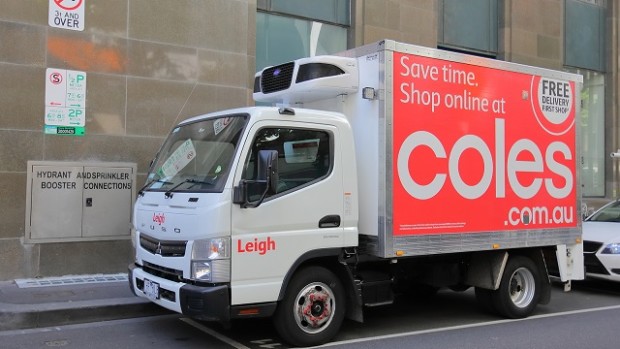

The coronavirus pandemic has led to a sudden surge in demand for home delivery of groceries and retailers are struggling to keep up. I believe different ways of picking and delivering groceries could both help people in need and alleviate the pressure in stores.
I experienced this challenge myself with my
elderly parents who are confined to their home in the UK. With no family nearby
to help with their shopping, I went online to arrange a delivery, only to discover
that every UK online grocer was fully booked for weeks. I ended up hiring a
home help company to shop for them and drop the bags at their door. It worked
well but it was expensive and required a bit of research and several conversations.
While relieved that my parents now had food
and essentials, the experience got me thinking about how grocery retailers might
increase their online capacity so that more people who are confined to their
homes can access essential products.
This problem can be broken down into the two
main activities in grocery fulfilment: (i) picking products; and (ii) delivering
picked orders. Each activity has its own productivity challenges and offers its
own potential solutions.
The picking challenge
A typical online order consists of around 40 items (all figures in this article are ball park averages, not from a specific retailer). As most grocery retailers pick their orders from store shelves, teams spend a lot of time walking up and down store aisles to fill the order. Productivity is thus not much greater than that of a walk-in shopper: around 20 minutes of effort to pick and pack 40 items. An additional complication is that many lines are currently out of stock. This leads to wasted time as teams hunt for items in backrooms or wait for the next delivery before completing an order.
Lifting picking productivity
Low productivity arises in this model because
customers choose products from a store’s entire range – often over 20,000 lines.
I believe there are two possible options that could overcome the inefficiencies
inherent in this approach:
-
Reducing the range to around 150 essential lines would enable a much leaner picking
operation. It allows retailers to set up a “production line” model, in a
dedicated space, that minimises movement of people and products. -
Bundling essential items into standardised orders for different household types
– e.g. a set list of typical items for a “large family”, “elderly couple”, “single”
etc. – would lead to higher productivity as orders could be picked in batches
in advance.
Both options clearly limit choice for the customer
but significantly increase retailer capacity to pick orders. I suspect many people
in need would be happy to compromise on choice in the months ahead to secure a
delivery of typical household fruit and vegetables and pantry supplies, for
example.
I estimate this approach, which requires no technology or automation, could allow a retailer to pick a 40-item order in four minutes versus the 20 minutes typically taken when picking from store shelves.
The delivery challenge
Online grocers face a “last-mile” hurdle that
most e-commerce businesses do not: they need to maintain the cold chain for
products like meat and dairy that spoil if unrefrigerated. To solve this challenge,
most online grocers ask customers to book a timeslot to ensure someone is home
to transfer the delivery straight to the fridge.
This delivery model makes it tough to create
cost-efficient routes, since the retailer’s vans must deliver to customers within
different timeslots who are dotted around the store’s delivery catchment. There
are many ways to improve efficiency, but few online grocers around the world exceed
three deliveries an hour from a van over a day.
Enhancing delivery productivity
Because most of us are at home during the pandemic these challenges recede since deliveries can be made like a postal service, or old-fashioned “milk run” – where everyone in a neighbourhood gets their delivery at around the same time – rather than meeting a customer-nominated timeslot.
Retailers could inform customers in a specified area of the time and day they will deliver, e.g. 9am – 11am on Monday each week. Furthermore, the delivery person could simply ring the customer’s doorbell and leave the products on the doorstep. This achieves a further time saving over the current model (where orders are usually brought into the house) and complies with social distancing requirements and keeping people safe.
My estimate is that this approach could achieve nine to 15 deliveries per hour versus the typical three deliveries per hour in the current model. The upper end of the range could be realised if the retailer delivered standardised bundles of products that did not require active refrigeration.
I believe this approach could work, based
on my years of experience in online grocery operations and familiarity with managing
different picking and delivery models. It could operate alongside existing
e-commerce operations or also be implemented as a quick route-to-market for
retailers who do not currently deliver to homes.
I would be happy to talk, at no cost, to grocery
retailers interested in discussing how this might work in practice. While
e-commerce fulfilment is not my current business, I have managed these models
before and, more importantly, believe this approach could help people in need
of essential supplies, like my parents, as well as relieve pressure on stores.
Please contact me by email at [email protected].
Jonathan Reeve is GM of ANZ for Eagle Eye, a SaaS platform that enables retailers to digitally connect with customers in real-time.
Jonathan is the author of “Retail’s Last Mile”, a book exploring the importance of fulfilment in e-commerce, and helped to develop the operating model for Tesco.com, a global pioneer of online grocery.
[1] All figures in this
article are ballpark averages, not numbers from a specific retailer

